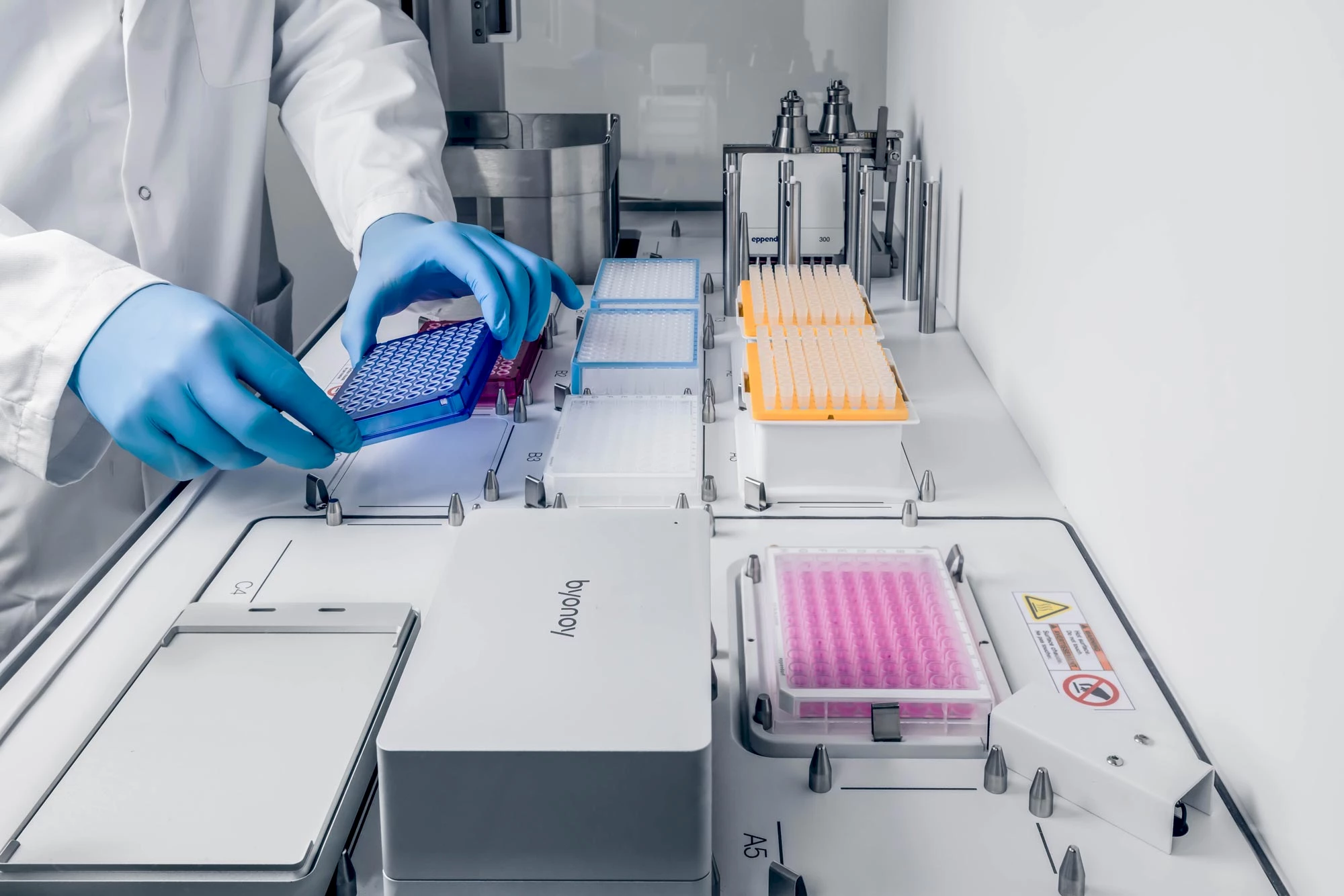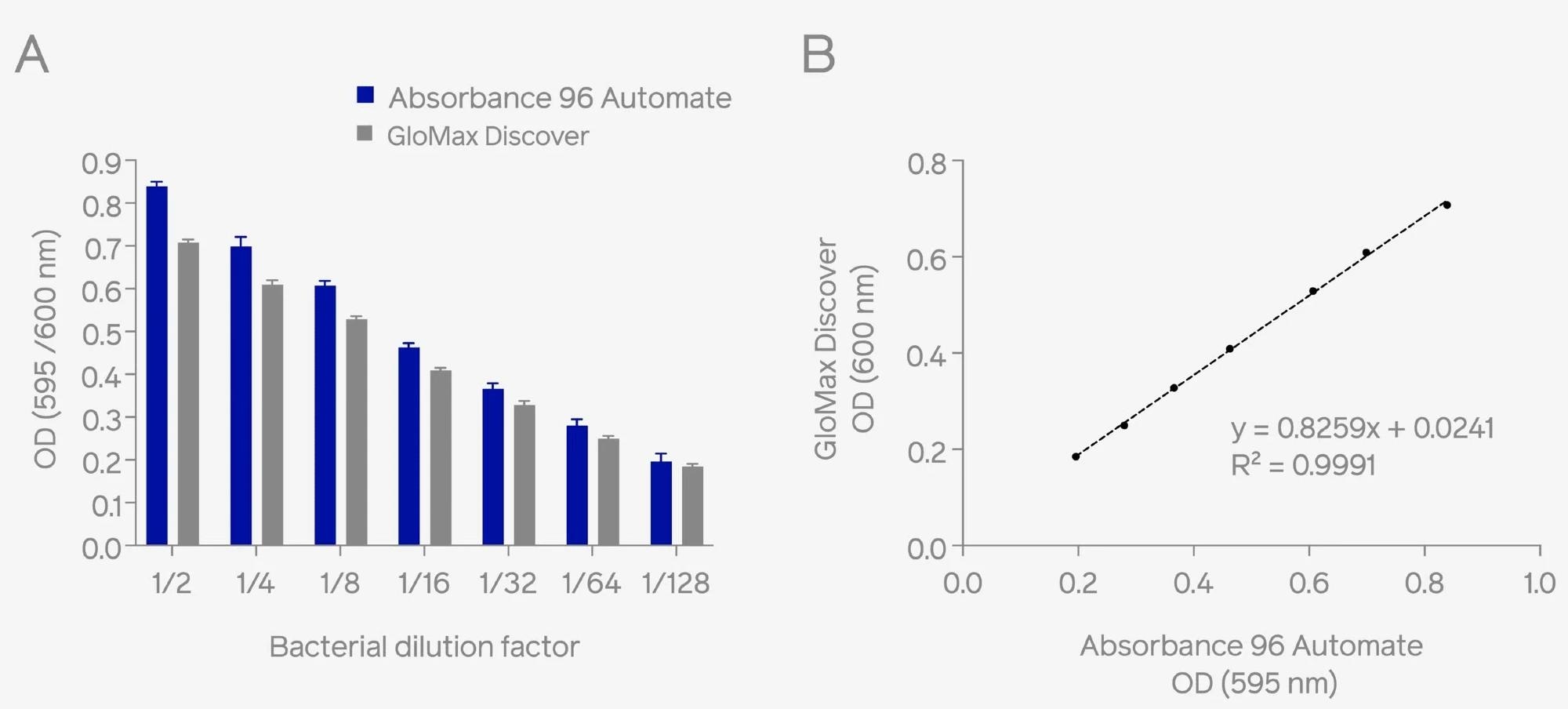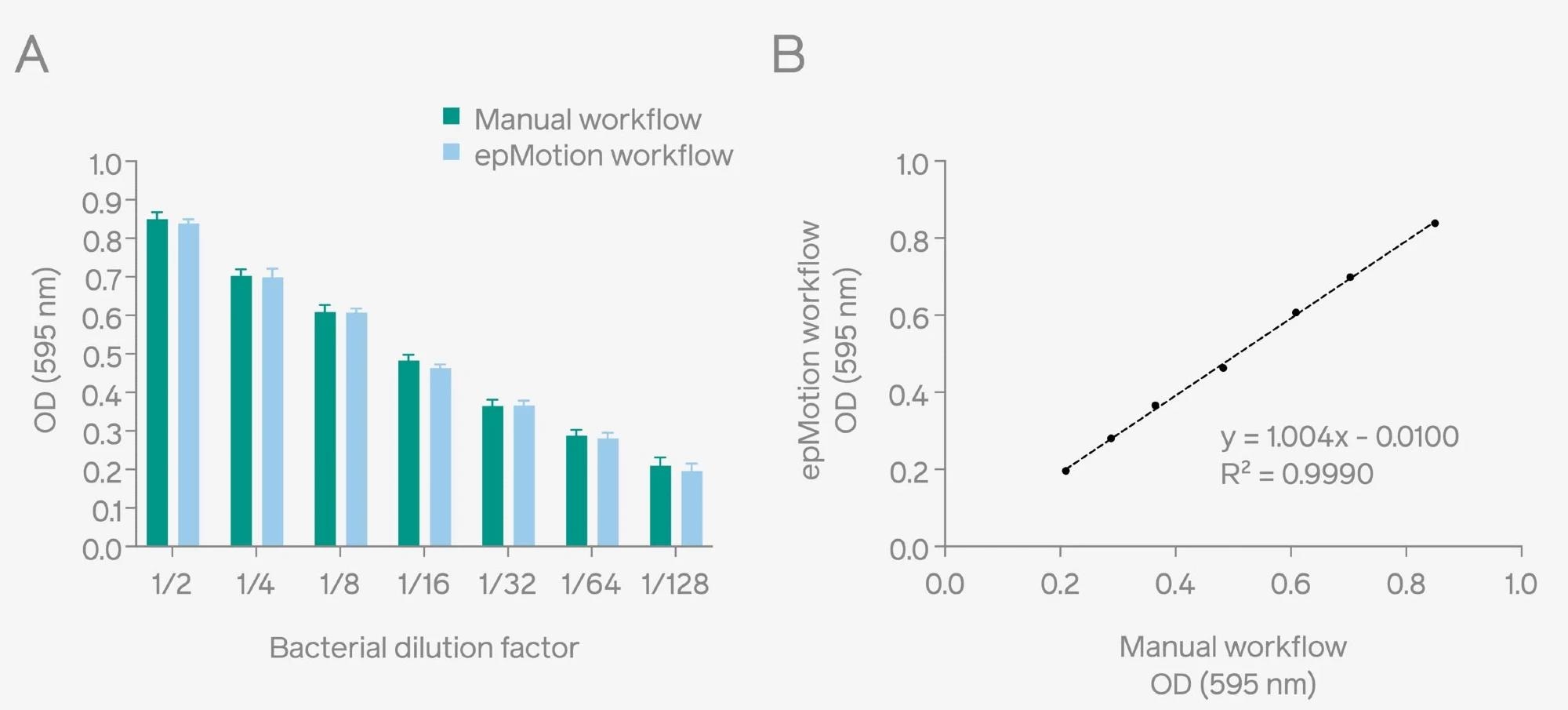Sponsored Content by ByonoyReviewed by Maria OsipovaMar 18 2024
To understand the bacterial growth kinetics and to optimize biomass and metabolite production, it is vital to monitor the growth of bacteria in culture.1 The predominant technique for quantifying bacterial growth encompasses the measurement of optical density at 600 nm (OD600) using either a microplate reader or photometer.

Image Credit: Byonoy GmbH
Using microplate readers for such a measurement will provide increased throughput and improved temporal resolution.2 To further enhance efficiency and throughput, the automation of microplate reading within liquid handling systems (LHSs) has emerged as a vital strategy.
This automated workflow alleviates labor-intensive procedures, such as cell seeding and pipetting, enabling researchers to precisely measure and analyze data from multiple plates with minimal intervention.
When comparing benchtop microplate readers with on-deck microplate readers such as Absorbance 96 Automate, specific issues become apparent, such as the necessity for an additional gripper system for facilitating the transfer of microplates from the LHS to the proximal microplate reader, introducing additional complexities.
Herein, the performance of the Absorbance 96 Automate integrated with the Eppendorf epMotion® (5075t) LHS is demonstrated and analyzed in comparison with another benchtop reader.
The results reveal comparable readouts, identical reproducibility, and performance sensitivity, which affirm the efficiency of the Absorbance 96 Automate in conducting throughput OD600 measurements.
A comparative evaluation of both manual and automated workflows revealed a reduction in time for performing the assay with the epMotion® LHS.
Automated bacterial growth assay workflow
Bacterial samples with varying dilution factors (2, 4, 8, 16, 32, 64, and 128x) were prepared and dispensed in deep-well plates (DWPs) in eight replicates using the epMotion LHS.
The plates were cultured and incubated for six hours at 37 degrees and bacterial aliquots were precisely pipetted into 96-well microplates using epMotion®. The automatic measurement of absorbance at 595 nm was performed by the Absorbance 96 Automate.
Results
Comparative analysis was conducted with the GloMax® Discover microplate reader from Promega. Bacterial samples with varying dilution factors were measured by recording absorbance values either at 595 nm (Absorbance 96 Automate) or at 600 nm (GloMax Discover). Similar OD values and a significant correlation (R² = 0.9991) were observed between both instruments; see Figure 1.

Figure 1. Different bacterial samples were prepared, and absorbance was measured either at 595 nm using Absorbance 96 Automate or at 600 nm with GloMax® Discover (A). A high readout correlation was observed between both devices (B), suggesting identical reproducibility, sensitivity, and linearity across the dynamic range. Image Credit: Byonoy GmbH
Results confirm that the Absorbance 96 Automate exhibits identical reproducibility, linearity, and sensitivity within the evaluated dynamic range when compared to the GloMax® Discover microplate reader.
Importantly, the Absorbance 96 Automate demonstrated a reduced readout time compared to the GloMax® Discover (5 seconds versus 58 seconds), emphasizing its efficiency in rapid data acquisition.
Further, the comparative analysis assessed bacterial growth measurements using both manual and automated workflows employing the epMotion® and Absorbance 96 Automate workflow solution, outcomes of which revealed a significant correlation between the two methodologies (Figure 2), indicating similarly efficient performances.

Figure 2. Bacterial growth assessments were carried out by measuring absorbance at 595 nm using the Absorbance 96 Automate, employing both manual and automated (epMotion®) workflows (A). A strong correlation in absorbance readouts was observed between the two workflows (B). Image Credit: Byonoy GmbH
Conversely, to the manual workflow, the total workflow analysis time decreased substantially in the automated workflow (from 19 minutes to 14.5 minutes), facilitating direct plate reading without user intervention.
Summary
The on-deck integration of Absorbance 96 Automate into the Eppendorf epMotion® system offers a convenient and efficient automated workflow for assessing bacterial growth in a 96-well plate. Comparative analysis results with other benchtop plate readers validate the performance of Absorbance 96 Automate for performing OD600 measurements with similar reproducibility, linearity, and sensitivity values.
The observed time-saving advantage in the automated compared to the manual workflow emphasizes the robustness and reliability of the system as an effective and expeditious solution for automated bacterial growth measurement across various assays.
References
- Loutfi, H. et al. (2020) Real-time monitoring of bacterial growth kinetics in suspensions using laser speckle imaging, Scientific Reports, 10(1).
- Krishnamurthi, V. R. et al. (2021) A new analysis method for evaluating bacterial growth with microplate readers, PLoS ONE, 16.
Acknowledgments
Produced from materials originally authored by Abhiyan Viplav and Rucha Datar from Eppendorf SE. Check out the original article here.
About Byonoy
The Byonoy GmbH was founded in 2015 as a spin-off from the University of Kiel and is situated in Hamburg. Our core competence is to develop innovative microplate readers based on photometric measurements for laboratory use.
Our aim is to facilitate the research and development process, to give researchers new opportunities, and to make the advantages of advanced biotechnological methods accessible to a broad range of laboratories.
For the realization of a successful innovation process, our network is a crucial factor. Our partners help us to realize our ideas and we are glad to share our expertise with them.
Sponsored Content Policy: News-Medical.net publishes articles and related content that may be derived from sources where we have existing commercial relationships, provided such content adds value to the core editorial ethos of News-Medical.Net which is to educate and inform site visitors interested in medical research, science, medical devices and treatments.